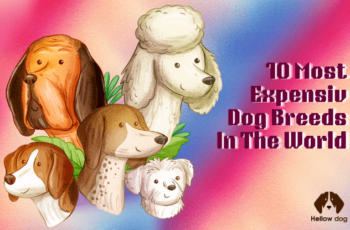Your canine companion’s behaviors might seem random and quirky, but sometimes they can be subtle cues about their well-being. Paw licking, for example, can be a sign of a deeper issue. Let’s unravel the possible reasons behind this behavior.
1. Injuries: The Obvious Culprit
Your dog’s adventurous antics outdoors can sometimes result in minor injuries. A simple misstep, a sharp stone, or a bristly bush can hurt their paws.
Pro Tip: Conduct routine paw checks after outdoor activities. Consider dog shoes for treks on uneven terrain.
2. Dermatitis: Not Just a Human Problem
Like people, our canine companions also grapple with skin allergies. Dermatitis, often due to environmental factors, can make their paws itch incessantly. They may be licking to scratch the itch.
Solution: Opt for pet-friendly yard and cleaning products. After walks, rinse paws in cool water to wash away potential irritants.
3. Pesky Parasites
Tales of ticks, mites, and fleas are every pet owner’s nightmare. These little pests can make your dog’s life itchy and uncomfortable.
Remedy: Use regular anti-parasite treatments and keep your dog’s bedding and living areas clean.
4. Food Allergies: Not Just Peanut Butter
Allergies to certain foods or ingredients can manifest as itchy paws. It might shock you that even dog food, made with the best intentions, can sometimes be the problem.
Plan: With a vet’s guidance, implement an elimination diet to identify problematic ingredients.
5. Pain Beyond the Paws
The pain might not always stem from the paw itself. Dogs might use paw licking as a coping mechanism for discomfort elsewhere.
Tip: Regular vet check-ups can help identify and treat conditions like arthritis early on.
6. Boredom & Anxiety: Mental Health Matters
For some dogs, paw licking is less about physical discomfort and more about mental well-being. Boredom and anxiety can manifest in such repetitive behaviors.
Quick Fix: Spice up your dog’s routine. New toys, more playtime, and training sessions can divert their attention from paw-licking.
See also

7. Secondary Infections: The Downward Spiral
The cycle of licking and moisture retention can lead to bacterial or fungal infections, making paws itchier and perpetuating the cycle.
Solution: Regularly dry your dog’s paws thoroughly. For persistent infections, your vet might prescribe antimicrobial treatments.
8. Environmental Factors: Not Just Nature’s Play
Seasonal changes can bring about a slew of elements, like pollens, that your dog might be sensitive to. Their reaction? Lick those paws.
Strategy: Familiarize yourself with local flora and pollen seasons. Limit outdoor activities during peak pollen times and consider paw balms or protective gear.
When Should You Be Concerned?
Remember, the occasional paw lick is just a dog being a dog. But when it becomes a constant behavior, it’s a cue for you to intervene. Working closely with a vet will ensure that your furry friend stays happy, healthy, and, most importantly, comfortable.
Being attuned to your pet’s behaviors, backed by knowledge, means a world of joy and health for both of you. So, let that tail wag and those paws play, knowing you’re always there for them!


